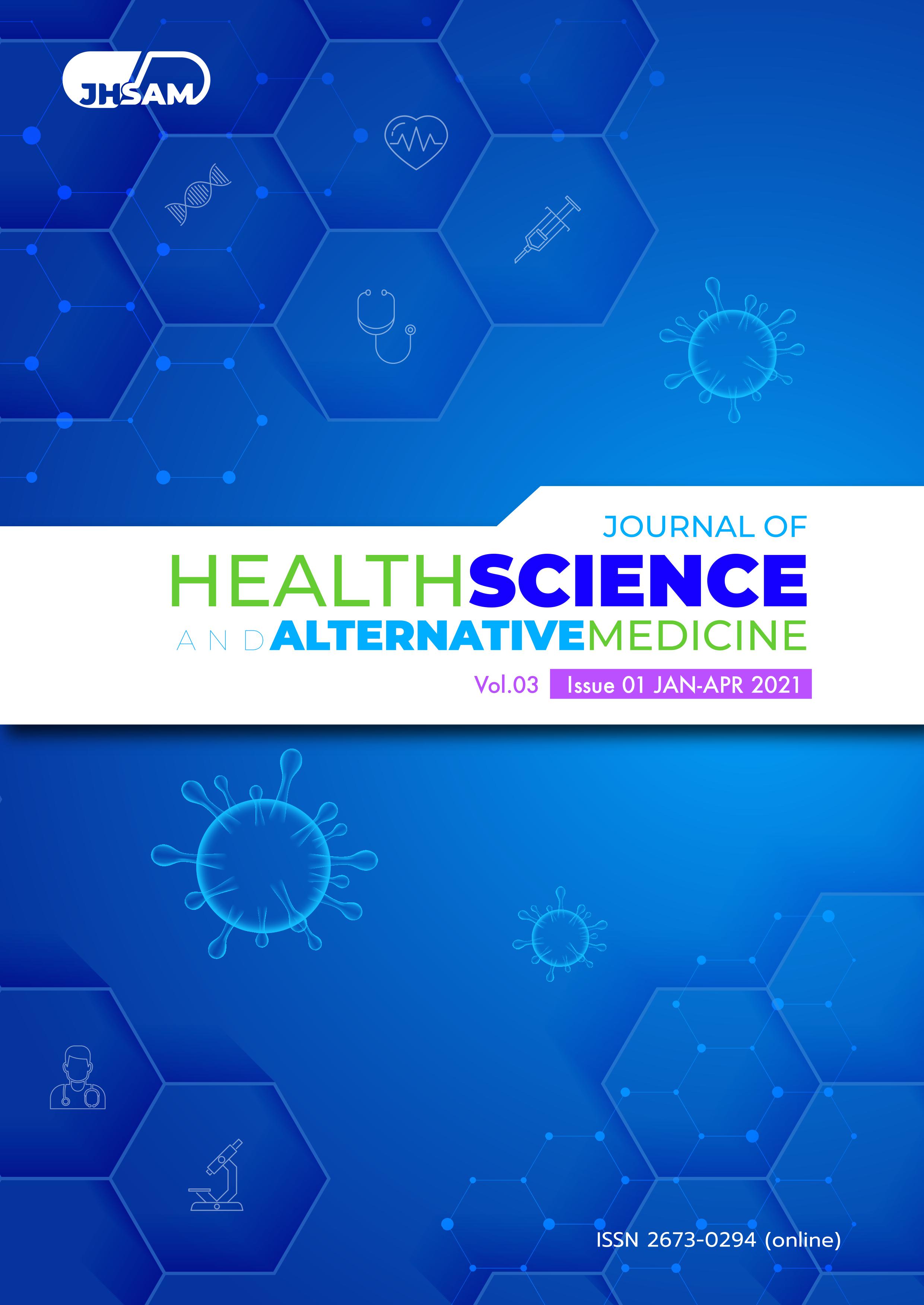COVID-19 State Quarantine Operation at a Local Setting: Implementation Evaluation
Main Article Content
Abstract
Purpose and objectives: This study aimed to evaluate the effectiveness of the coronavirus disease 2019 (COVID-19) state quarantine implemented at the local border between Thailand and Myanmar in the aspects of the satisfactions of people involving the operation and new infected cases from the people attending the quarantine.
Intervention approach: A state quarantine in a local border of Thailand and Myanmar setting, which was a community intervention approach, was implemented.
Evaluation methods: A qualitative method was used to assess the effectiveness of the state quarantine operation. Selected participants were invited to provide information through in-depth interviews. Questionnaires were developed and tested for their validity before commencement of the interviews. Mobile phone and face-to-face interviews were conducted, which lasted 45 minutes each.
Results: Seventeen participants were interviewed. The attendees were highly satisfied with the infrastructure and process of the operation. The community where the quarantine facility was built needed essential information about the state quarantine operation. Two challenges were detected during the quarantine operation: public health officers who were insufficiently trained for working in the quarantine facility and some workers working in the quarantine facility were highly vulnerable to COVID-19.
Implications for public health: A state quarantine in the local area, particularly in Chiang Rai Province, Thailand, is highly effective as confirmed by 55 participants who were free of COVID-19 after completing the 14-day quarantine period in the facility.
Article Details
JHSAM publishes all articles in full open access, meaning unlimited use and reuse of articles with appropriate credit to the authors.
All our articles are published under a Creative Commons "CC-BY-NC-ND 4.0". License which permits use, distribution and reproduction in any medium,
provided that the original work is properly cited and is used for noncommercial purposes.
References
World Health Organization (WHO). COVID-19: Global situation. Available from: https://covid19.who.int
World Health Organization (WHO). Considerations for quarantine of individuals in the context of containment for coronavirus disease (COVID-19). Available from: https://apps.who.int/iris/bitstream/handle/10665/331497/WHO-2019-nCoV-IHR_Quarantine-2020.2-eng.pdf
World Health Organization (WHO). COVID-19: Myanmar situation. Available from: https://covid19.who.int/region/searo/country/mm.
Muangmor H, Upala P, Apidechkul T. COVID-19 outbreak in the Chiang Rai border area due to illegal immigration to Thailand: a field investigation. Journal of Health Science and Alternative Medicine. 2020; 2(3): 22-28.
Brooks SK, Webster R, Smith LE, Woodland L, Wessely S, Greenberg N, et al. The psychological impact of quarantine and how to reduce it: rapid review of the evidence. The Lancet. 2020; 359(10227): 912-920.
World Health Organization (WHO). Considerations for quarantine of individuals in the context of containment for coronavirus disease (COVID-19). Available from: https://apps.who.int/iris/bitstream/handle/10665/331497/WHO-2019-nCoV-IHR_Quarantine-2020.2-eng.pdf.
Centers for Disease Control and Prevention (CDC). Order for quarantine. Available from: https://www.cdc.gov/quarantine/pdf/Public-Health-Order_Generic_FINAL_02-13-2020-p.pdf
Ministry of Public Health, Thailand. Alternative state quarantine. Available from: http://www.hsscovid.com/files/A%20State%20Quarantine%2017.4.63.pdf
National Review of Hotel Quarantine, Australia Government. National review of hotel quarantine. Available from: https://www.health.gov.au/sites/default/files/documents/2020/10/national-review-of-hotel-quarantine.pdf
Tognotti E. Lessons from the history of quarantine, from plague to influenza A. Emerging Infectious Diseases. 2013; 19(2): 254-259.
Tang B, Xia F, Tang S, Bragazzi NL, Li Q, Sun X, et al. The effectiveness of quarantine and isolation determine the trend of the COVID-19 epidemic in the final phase of the current outbreak in China. International Journal of Infectious Disease. 2021; DOI: 10.1016/j.ijid.2020.03.018.

